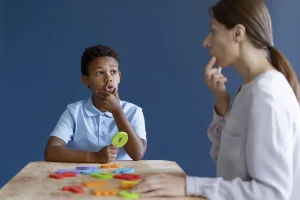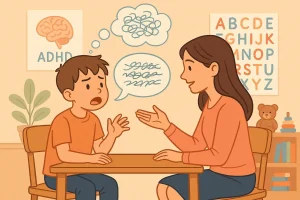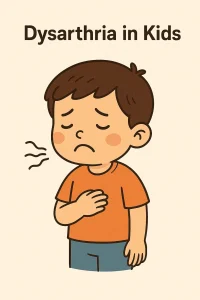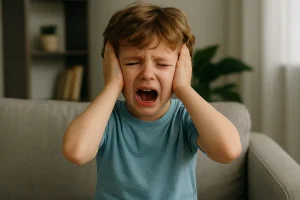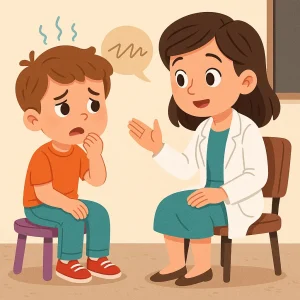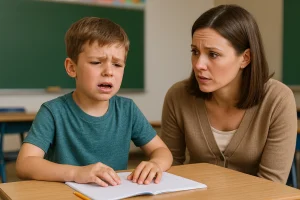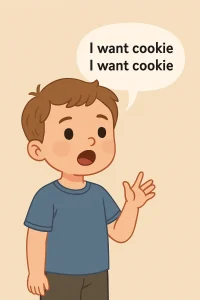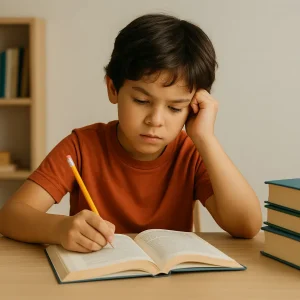WH Questions for Kids: A Simple Guide to Teaching and Learning
By Rajini D
Last Updated: February 15, 2025
Welcome to the world of WH questions—simple yet powerful tools that shape the way we communicate every day! WH questions for kids encompass the basics: Who, What, When, Where, Why, and How. These are the building blocks of conversation, helping children gather information, connect with others, and navigate their daily lives. By mastering these questions, kids can enhance their communication skills significantly, opening up new avenues for learning and interaction.
Why are WH Questions So Important?
WH questions are crucial in everyday communication because they direct us to the specifics of what we want to know. Whether you’re asking a friend, “What time do we meet?” or your child, “Where did you put your shoes?”, these questions help clarify details that enable us to act, make decisions, and understand the world around us.
Also read: Why WH Questions Matter for Kids and How to Teach Them
The Everyday Magic of WH Questions
Consider a typical day: you might ask “Who called me?” to check a missed call, or “How do I make this recipe?” while cooking. Each WH question serves a unique purpose:
- Who helps us identify people and responsibilities.
- What focuses on objects, actions, and events.
- When gives us timing, crucial for planning.
- Where points to places, guiding our movements.
- Why explores reasons behind actions, deepening our understanding.
- How reveals methods or processes, showing us ways to achieve something.
Understanding the Basics of WH Questions
Navigating the world of language can be quite an adventure for young minds, and WH questions are like the compass that guides them through conversations and learning. Let’s break down what these questions are and how they play a pivotal role in language development.
What are WH Questions?
WH questions are inquiries that begin with the words Who, What, When, Where, Why, and How. Each one serves a specific purpose, helping us gather different types of information. Here’s a simple breakdown to help you understand each one better:
- Who: Asks about people. Example: “Who is your teacher?”
- What: Inquires about things or activities. Example: “What is your favorite game?”
- When: Questions about time. Example: “When is your birthday?”
- Where: Seeks information on location. Example: “Where did you put your toy?”
- Why: Looks for reasons or causes. Example: “Why is the sky blue?”
- How: Explores the manner or process of doing something. Example: “How do you tie your shoes?”
The Role of WH Questions in Language Development
WH questions are fundamental in fostering language development in children. They encourage children to think critically, express themselves, and interact with the world around them. Here’s how they contribute to learning and understanding:
- Building Vocabulary: Each WH question nudges children to explore different aspects of language, expanding their vocabulary as they seek to form responses.
- Enhancing Comprehension: By asking and answering WH questions, children learn to process information, discerning between who, what, where, when, why, and how, which are essential for understanding context and details.
- Encouraging Curiosity: These questions inherently promote curiosity, a driving force in educational success, as children learn to inquire and investigate their environment.
- Improving Communication Skills: Regular practice with WH questions helps children become better communicators. They learn to ask more informed questions and provide clearer answers.
- Developing Social Skills: Through these questions, children engage in conversations that help them understand social cues and interact effectively with peers and adults.
Types of WH Questions
| Type | Definition | Example Question |
|---|---|---|
| What | Asks about an object | “What is this?” (Pointing to a ball) “What are you eating?” |
| Who | Inquires about people | “Who is this?” (Showing a picture of mom/dad) “Who gives you food?” |
| Where | Questions about location | “Where is your toy?” “Where do you sleep?” |
| When | Asks about time | “When do you sleep?” “When do we eat breakfast?” |
| Why | Seeks reasons or explanations | “Why do we wear shoes?” “Why are you happy?” |
| How | Explains the manner or process | “How do you tie your shoes?” |
Also read: WH Questions Examples for Kids: How to Teach with Fun Activities
Teaching WH Questions: Sequence and Examples
Teaching WH questions to children is a step-by-step process that builds on their natural curiosity and understanding of the world. By introducing these questions in a specific order, you can help children grasp the concept more effectively and use them more confidently in everyday interactions.
Introduction to Teaching Order
The best way to introduce WH questions is to start with the simplest concepts and gradually move to more complex ones. This method ensures that children are not overwhelmed and can build on their knowledge as they progress. Here’s a recommended sequence for teaching:
- What: Begin with questions about objects, which are tangible and easy to identify.
- Who: Next, introduce questions about people, which are slightly more abstract but still relate to visible, familiar figures.
- Where: Then, teach about places, which requires an understanding of spatial concepts.
- When: Introduce time-related questions next, which abstract further from the immediate surroundings.
- Why: Move on to reasoning, which challenges children to think about causes and effects.
- How: Finally, explore procedural questions, which are the most complex and involve explaining processes.
Physical and Digital Resources for Teaching WH Questions
To effectively teach WH questions, incorporating both physical and digital resources can create a dynamic learning environment that caters to different learning styles.
Physical Examples
Physical resources are particularly effective for younger children who benefit from tactile and visual aids. Here are a few ways to use physical resources:
- Toys and Props: Use toys to ask questions like “What is this?” or “Who does this belong to?” This method helps children connect words with objects and people.
- Daily Activities: Incorporate WH questions into daily routines. For example, during mealtime, you might ask, “What are you eating?” or “Where did we buy this fruit?”
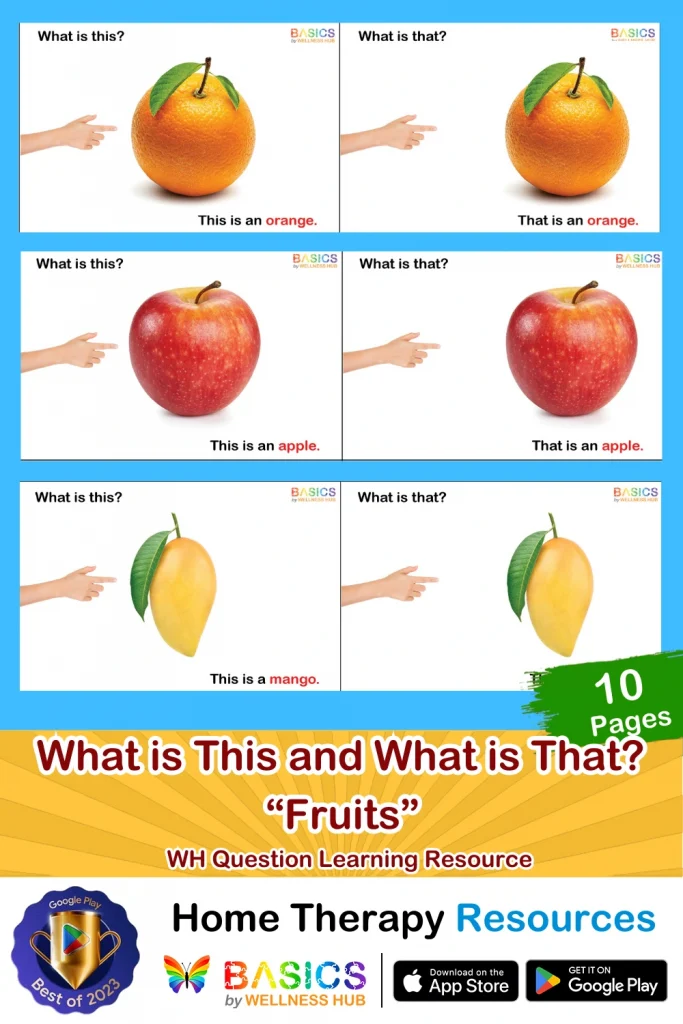
Download our FREE Fruits Flashcards to boost your child’s vocabulary and learning fun
Digital Examples
Digital resources can offer interactive and engaging ways to learn WH questions, especially as children become more familiar with technology:
- BASICS App: This app provides scenarios and games that focus on using WH questions in the context of understanding social cues and behaviors.
- Online Speech Therapy Redefined with Tele-BASICS: Available at Wellness Hub, this tool integrates WH questions into speech therapy sessions, making them interactive and fun, which can be particularly helpful for children needing additional support in language development.
Simple Techniques for Introducing WH Questions
Integrating WH questions into everyday conversations is a natural and effective way to teach these important tools. Here are some interactive methods that can make learning both fun and impactful:
- Daily Conversations: Incorporate WH questions into routine conversations. For example, during breakfast, you might ask, “What are you eating?”, “Who made the cereal?”, or “Where do apples come from?” This casual practice helps children understand the context and use of each question type.
- Storytelling: Use storytime to ask questions about the plot and characters. After reading a story, ask, “Why did the character do that?”, “What happens next?”, or “How did they solve the problem?” This not only improves their listening skills but also their ability to think critically about cause and effect.
- Scavenger Hunts: Create simple scavenger hunts where children need to find items based on WH questions. For instance, “Find something that is round (What)”, “Find something made in China (Where)”, or “Find something used in winter (When)”. This makes learning an active and enjoyable experience.
- Role-Playing: Engage in role-playing games where you and your child ask each other WH questions. This could be as simple as playing shopkeeper and customer, where you ask each other questions like, “What would you like to buy?” or “How much does this cost?”
Engaging Activities and Resources from Wellness Hub
Wellness Hub provides a variety of resources designed to make learning WH questions not just easier but also more engaging. Here are some highlights:
- Interactive Games and Apps: Our platform features games and apps that are tailored to help children practice WH questions in a fun, interactive way. These tools are designed to reinforce learning through repetition and engagement.
- Printable Worksheets and Activities: Available for download, these resources include colorful worksheets that challenge children to answer and ask WH questions, improving their reading and comprehension skills.
- Video Tutorials: Short, engaging video tutorials that explain each WH question with examples and visuals make it easier for children to grasp and remember these concepts.
- Online Courses for Parents: For parents who want to take a more active role in their child’s language development, Wellness Hub offers online courses that provide strategies and tips for teaching WH questions effectively.
Example Questions to Ask Your Child
Here is a list of creative WH questions tailored to different age groups that can help spark curiosity and engage children in meaningful conversations:
- Toddlers (Ages 2-3)
- What color is the sky?
- Who is your favorite cartoon character?
- Where do cats sleep?
- When do we go to the park?
- Why do we brush our teeth?
- Preschoolers (Ages 4-5)
- What do you like to eat for lunch?
- Who is your best friend at school?
- Where is your favorite place at home?
- When is your birthday?
- Why do leaves fall from the trees?
- School Age (Ages 6+)
- What are you reading in school?
- Who was the first president of the United States?
- Where do rivers flow into?
- When is it appropriate to say thank you?
- Why is it important to recycle?
Games and Exercises to Practice WH Questions
To further reinforce the learning, here are some fun games and exercises that incorporate WH questions, enhancing both learning and enjoyment:
- WH Question Bingo: Create a bingo game with cards that have answers to different WH questions. During play, ask the questions, and children will cover the answers if they have them on their cards.
- Treasure Hunt: Organize a treasure hunt where each clue involves answering a WH question correctly to move to the next step. This game can be themed around a child’s interests to make it more engaging.
- Role-Playing Scenarios: Set up scenarios where children can play different roles, such as shopkeepers, teachers, or doctors, and interact using WH questions. For example, in a pretend grocery store, they might ask, “What fruits do you want to buy?” or “Where did you find the eggs?”
- Story Cubes: Use story cubes that have pictures on them. Roll the cubes and ask the child to make up a story based on the images, guiding them with WH questions like, “Who is the main character?” “What is happening?” and “How will it end?”
- Interactive Online Games: Utilize interactive games available on Wellness Hub that are specifically designed to practice WH questions in a digital format, making learning both fun and accessible from anywhere.
The Importance of Mastering WH Questions
Understanding and using WH questions effectively is crucial for a child’s development in many areas, from enhancing their communication skills to boosting their performance and interactions in educational settings. Let’s explore how mastering these questions can pave the way for more effective communication and why it plays a vital role in education.
Enhancing Communication Skills
Mastering WH questions is a foundational skill that significantly enhances communication abilities in children. When children learn how to use these questions correctly, they gain the power to:
- Express Needs and Curiosities: By asking questions like “What are we having for dinner?” or “Why is the sky blue?”, children learn to articulate their thoughts and express their needs and curiosities clearly.
- Gather Information: The ability to ask the right questions at the right time helps children gather information more effectively, which is crucial for their ability to learn and make sense of their environment.
- Build Relationships: Asking questions is a key part of engaging in conversations that build relationships. By showing interest in others through questions like “How was your day?” or “What did you do at school today?”, children learn to foster connections with peers and adults.
- Problem Solve: Understanding how to ask relevant and targeted questions like “How can we fix this toy?” enhances children’s problem-solving skills, allowing them to handle challenges more effectively.
Benefits in Educational Settings
The proficiency in using WH questions also has a profound impact on a child’s academic performance and social interactions in educational settings:
- Enhanced Academic Performance: Mastering WH questions helps children understand and follow instructions better, comprehend reading materials more deeply, and engage more effectively in classroom discussions. This comprehension leads to better test scores and overall academic success.
- Improved Social Interactions: In school, social interactions form a large part of the learning experience. Children who can ask appropriate and relevant questions are often more socially adept and can navigate school dynamics more effectively. This ability helps them in group projects, during playtime, and in building meaningful relationships with peers.
- Increased Engagement: Children who are skilled at asking WH questions tend to be more engaged in their learning process. They can lead inquiries during class activities, which not only boosts their interest in school subjects but also encourages a lifelong love of learning.
- Development of Critical Thinking: The use of WHY and HOW questions, in particular, nurtures critical thinking. Children learn not just to accept information at face value but to delve deeper into the reasoning behind facts and ideas, which is essential for higher-level education and beyond.
Conclusion
WH questions are key to kids’ learning, helping them communicate better and thrive in school. At Wellness Hub, we provide fun tools and resources to make learning these questions exciting. Encourage your child to ask more questions—it’s a great way for them to learn and grow! Dive into our interactive games and helpful guides to support your little one’s journey. Remember, every question is a step towards understanding the world better. Let’s make learning enjoyable together! Visit our Learning Resources page for more fantastic educational tools.
Frequently Asked Questions:
1. What are WH questions?
WH questions include “Who,” “What,” “When,” “Where,” “Why,” and “How.” These questions are essential for gaining information and are used to ask about people, objects, time, places, reasons, and methods. Teaching your child these questions enhances their ability to inquire and understand the world.
2. Why is it important for kids to learn WH questions?
Mastering WH questions enables kids to express themselves clearly and gather information effectively. This skill is crucial for their overall communication development and helps them navigate social interactions and academic challenges.
3. At what age should children start learning WH questions?
Children can begin learning simple WH questions around two years old, starting with “What” and “Who.” As they develop better speech and understanding, gradually introduce more complex questions like “Where,” “When,” “Why,” and “How.”
4. How can I teach WH questions to my toddler?
Incorporate WH questions into daily routines. For instance, during mealtime or play, ask questions like “What are you eating?” or “Who is your doll?” This method helps toddlers connect language with their environment and actions.
5. What are some fun activities to teach WH questions?
Engage your child with activities such as treasure hunts where they answer WH questions to find clues, or role-playing games where they must ask and answer questions as part of the game. These activities make learning dynamic and interactive.
6. How do WH questions help in school?
In school, WH questions help children follow lessons, understand reading materials, and participate in discussions. Proficiency in these questions correlates with better academic performance and more effective communication with peers and teachers.
7. Can WH questions boost my child’s language development?
Yes, regularly using WH questions can significantly expand a child’s vocabulary and improve their grammar and sentence structure, enhancing both spoken and written language skills.
8. What resources are available to help teach WH questions?
Wellness Hub offers a variety of resources, including interactive games, printable worksheets, and detailed guides, designed to make learning WH questions engaging.
9. What is the best order to teach WH questions to children?
Start teaching WH questions with those that refer to concrete concepts like “What” and “Who,” and then progress to more abstract concepts like “Where” and “When.” Save “Why” and “How” for when your child is more capable of abstract thinking, typically around preschool age.
10. How do WH questions enhance a child’s critical thinking?
WH questions like “Why” and “How” challenge children to think about the reasons behind actions and the steps involved in processes. This practice develops their analytical skills and enhances their ability to solve problems creatively and effectively.
About the Author:
Rajini Darugupally
M.Sc., Speech-Language Pathologist (9+ years of experience)
Rajini is a passionate and dedicated Speech-Language Pathologist with over 9+ years of experience, specializing in both developmental speech and language disorders in children and rehabilitation in adults. Driven by a desire to empower each individual to find their voice, Rajini brings a wealth of experience and a warm, genuine approach to therapy. Currently, at Wellness Hub, she thrives in a team environment that values innovation, compassion, and achieving results for their clients.
Book your Free Consultation Today
Parent/Caregiver Info:
Client’s Details:
* Error Message

